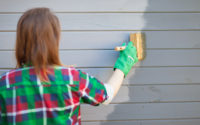Justifications for Removing Antifoul or Bottom Paint: Understanding Antifouling Paint
Antifoul is often called bottom paint. Boaters use it to suppress slime, grass, barnacles, and other creatures that develop beneath boats and delay or consume them. Biocide, a life-destroying chemical is used. About 95% of bottom paints contain biocides made of copper or cuprous oxide.
Ablative and hard-bottom paints are the two primary varieties and what is the best antifouling for fresh and saltwater depends on the needs. Ablative paints break down with time, making them self-polishing, soft, or eroding. Over time, water flow will erode the paint, allowing the biocide to seep out. The faster your boat moves, the faster the bottom paint erodes and the more often it needs to be repainted.
Hard bottom, or non-sloughing, paints feature a lasting epoxy coating. Biocide wears away instead of paint using these chemicals. This means you’ll run out of biocide and have to strip or recoat your hull. Ablative paint is used on most recreational boats, however there are others. No antifouling system is universal because performance depends on boat type, speed, water quality, and weather.
The Environmental Damage Caused by Antifouling
It is time to stop using antifouling and instead learn about other solutions, which are non-toxic and require no upkeep. Below we describe some of those reasons;
1. Antifoul Pollutes Boats and Fishing Waters.
The love of oceans, lakes, and rivers drives most boat use. It’s not their goal to poison their beloved areas. However, ‘biocide’ is the clue. Copper paint prevents live things from living on your yacht. It can also kill or damage them outside. Each copper component in most bottom paints leaches into the water. Two pounds of copper per 30-foot yacht each year is estimated.
2. You Risk Poisoning Others Or Yourself.
Antifouling smells. It poisons people and fish. Britain and Europe’s new Biocidal Product Regulation acknowledges this. This regulation requires bottom paint active chemicals renewal. Some believe environmental health restrictions will restrict antifouling paint use to professionals. Meanwhile, avoid touching your skin and eyes, eating or drinking near them, and breathing or swallowing these substances. Disposing of trash, cleaning materials, etc. requires caution. Antifouling is banned in boatyards for health reasons.
3. Slowing Your Boat.
Some say bottom paint slows boats. The smooth paint on your hull may not be noticeable. The layers will build up if you apply two coats of ablative paint annually and the boat is rarely used. Time weakens ablative bottom paint’s protection. Paint may become harsh or slimy. Drag lowers boat speed and fuel use.
4. Extra Upkeep
As usual, maintenance wastes time and money. The bottom paint on your boat needs repair. Application, cleansing, and reapplication will occur. The proper paint must be applied over an existing coat. That one-time scrape takes a barrier to care. This exercise doesn’t happen every five years. Many boats replace antifouling annually. Another charge. Many boatyards prohibit costly antifouling treatment to reduce risk and insurance.
Conclusion
Boating is increasing worldwide, affecting the environment. The US Environmental Protection Agency recommends restricting recreational yacht paints. California did it. Washington State planned to ban copper bottom paints in 2018. Only when the substitutes were demonstrated to be hazardous was the restriction delayed. Copper leach rate limits are being examined, but alternatives are being researched. EU authorities are concerned about Sweden and the Netherlands’ limited bans.



